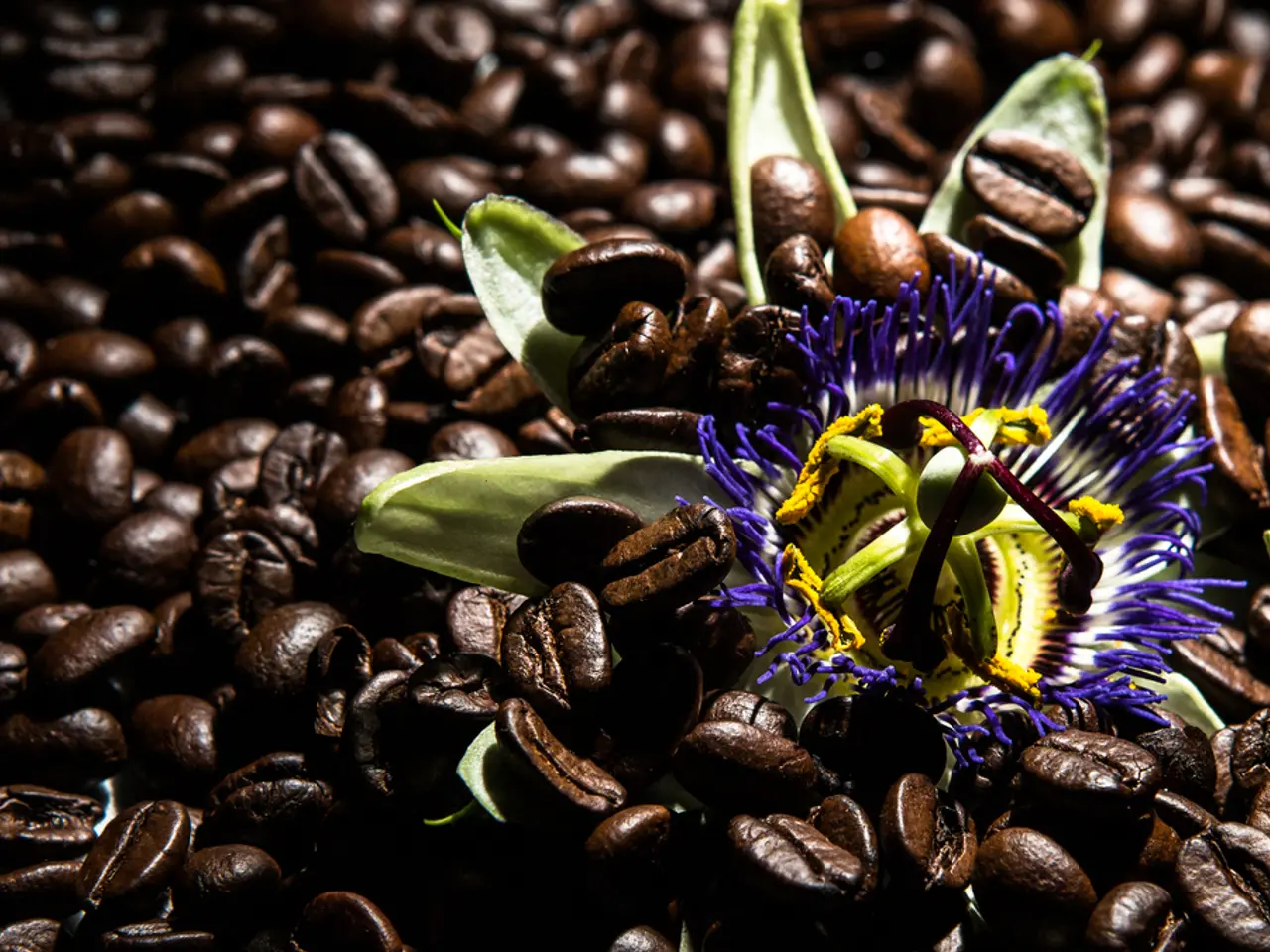Coffee yields in Brazil are placing stress on coffee prices due to harvest difficulties
In the world of coffee, the anticipation surrounding Brazil's 2025/26 harvest has been building. As of late July 2025, about 84% of Brazil’s coffee harvest was complete, with robusta nearly finished and arabica expected to finish by late August, despite one of the wettest harvests on record[1].
Brazil’s coffee production forecast for the crop year July 2025–June 2026 is about 65 million bags, a 0.5% increase compared to the previous year according to USDA and national estimates[3][4]. Heavy rains and a few light frosts had minimal impact, with bean size and quality even improving in some areas[1].
The increased supply outlook has driven arabica coffee prices downward, reaching multi-month lows by mid-2025 as traders anticipate abundant harvests not only from Brazil but also from Vietnam (for robusta coffee), whose production is also rising[3][4]. Robusta coffee prices have shown some support due to tightening inventory levels globally, even as Brazil’s robusta harvest finishes[1][3].
Sustainability initiatives and farmer training programs are expanding in Brazil’s key growing regions, potentially influencing longer-term production quality and market dynamics[1].
However, the markets remain concerned about the threat of a 50% tariff on Brazilian goods if Brazil does not reach a trade deal with the US by Friday.
It's important to note that Brazil is the world's largest producer of arabica coffee, and Vietnam is the world’s largest producer of robusta coffee. In the previous crop year, Vietnam's coffee production decreased by -20% y/y to 1.472 MMT, the smallest crop in four years[5].
Recent rain in Brazil has eased dryness concerns and is bearish for coffee prices. Robusta coffee inventories reached a 1-year high of 7,029 lots on Monday[6]. The Vietnam Coffee and Cocoa Association reduced its 2024/25 Vietnam coffee production estimate to 26.5 million bags on March 12, down from a December estimate of 28 million bags[7].
The breakdown showed that 96% of the robusta harvest and 76% of the arabica harvest were complete as of July 23[8]. Cooxupe, Brazil's largest coffee cooperative and Brazil's largest exporter group, announced its harvest among its members was 67% complete as of July 25[9].
The USDA's FAS forecasts a +7.9% increase in robusta production and a -1.7% decrease in arabica production for 2025/26[10]. September ICE robusta coffee (RMU25) is down -44 (-1.31%), while September arabica coffee (KCU25) is down -8.15 (-2.70%) today[2].
In summary, Brazil's 2025/26 coffee harvest is slightly larger and of high quality, contributing to ample global coffee supplies and exerting downward pressure on arabica prices, while robusta prices remain somewhat supported by tighter stocks outside Brazil. This harvest is expected to modestly increase global coffee availability without causing major price spikes.
[1] Safras & Mercado Report [2] ICE Coffee Prices [3] USDA Biannual Report [4] Brazilian Coffee Exports Data [5] Vietnam Coffee Production Data [6] Robusta Coffee Inventories Data [7] Vietnam Coffee and Cocoa Association [8] Coffee Production Breakdown Data [9] Cooxupe Coffee Co-op Data [10] USDA FAS Forecasts
Sports enthusiasts may find solace in the progress of Brazil's coffee harvest, as record-breaking rainfall has been offset by improve bean size and quality in some areas. Despite being the world's largest producer of arabica coffee, the anticipated surplus could potentially influence the prices of other mainstream crops, much like how surplus harvests in major sports affect team values and players' salaries.







